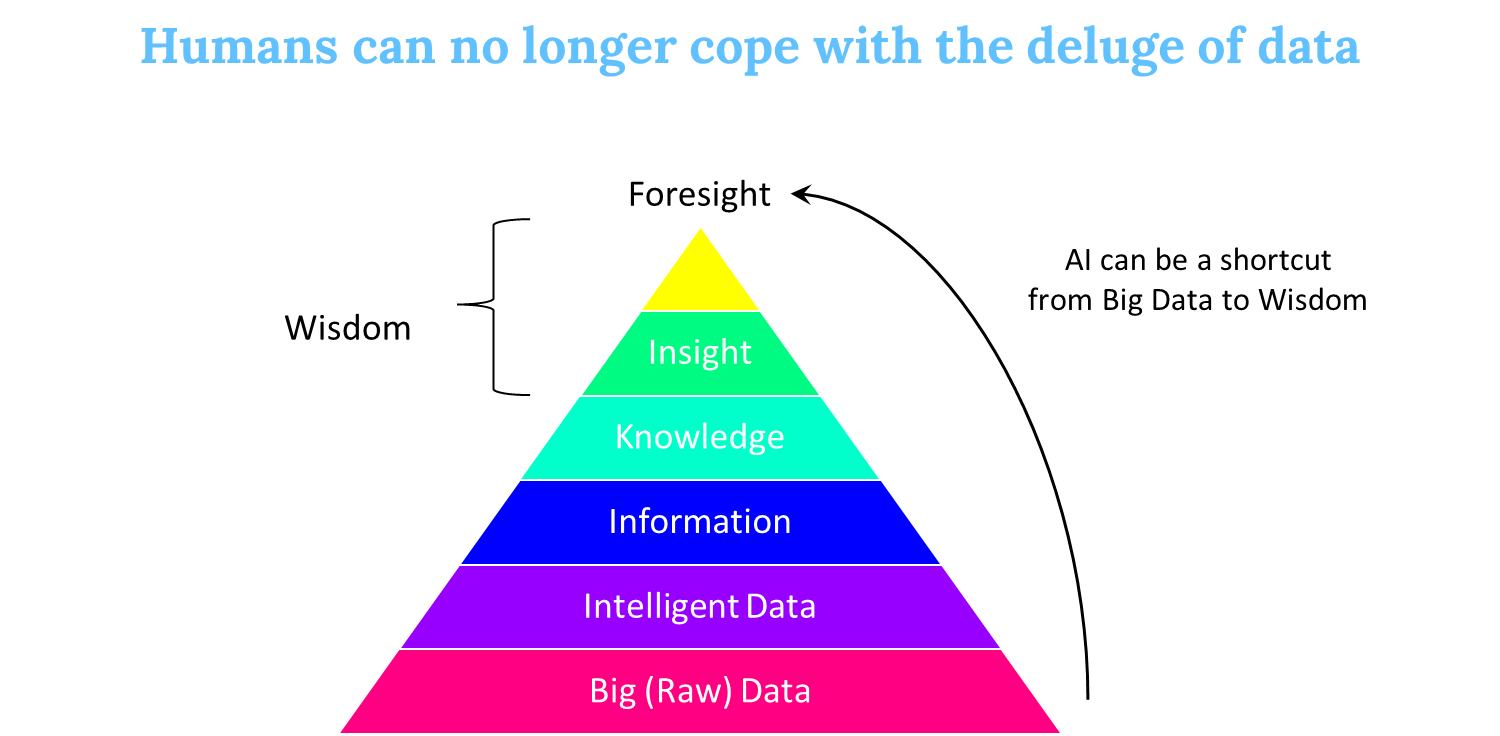In a world overflowing with data, it’s no surprise that business leaders often place a great deal of stock in the ‘DIKW pyramid.’ This is a model which adds increasing value to each level of the pyramid, starting with data, followed by information, knowledge, and – at the pinnacle – wisdom.

In the world of social intelligence, this pyramid model can be amended slightly to supplant ‘wisdom’ with the sought-after and elusive phenomenon that we call ‘insight.’
I’ve always believed that ‘insight’ is, in essence, a kind of buzzword – that is, a word or phrase that means different things to different people. To marketing and market research practitioners, the term is often erroneously employed as a mere synonym for information or knowledge. As such, it’s worth taking any usage of the term with a pinch of salt, especially when it’s offered up without context or elaboration.
By throwing around the term ‘insight’ with, ironically, a less-than-insightful understanding of its connotations, we run the risk of failing to recognise the value and significance of true business insight – especially when we conflate it with similar (but lesser) terms and concepts such as intelligent data and actionable information.
Borrowing the aforementioned pyramidal structure, then, it’s worth outlining the relative meanings and merits of these three terms, starting with intelligent data on the bottom, followed by actionable information, and concluding with insight, which we shall place on the peak of our ‘insight pyramid.’
Succeeding in data science projects — preparation, process and open source
Intelligent data and how it’s used
Insight might ultimately stem from data, but that doesn’t mean data – or even ‘intelligent’ data – should be conflated with insight. They aren’t the same thing.
That’s not to say that adding intelligence to data isn’t important, of course. After all, raw and unprocessed data can only gain value once we’ve added intelligence – once we have, in other words, annotated and quantified that data.
This principle is, of course, magnified in the context of what’s known as ‘big data’, which I generally take to mean datasets that must be measured in terms of gigabytes and exabytes. Through the use of machine learning, it’s possible to add intelligence to this kind of massive dataset through annotating it with sentiment, emotions, topics, and other useful variables.
This process might well be able to offer up some handy titbits of information – not enough to qualify as insight, but perhaps enough to be considered actionable information.
What does actionable information look like?
As we ascend our knowledge pyramid, it’s easy to see how one might confuse actionable information with true insight. Nonetheless, there is an important distinction between the two terms, especially when it comes to their respective relationships to long-term strategy.
Let’s consider an example from the world of customer experience (CX) measurement and management.
By trawling through intelligent data, as discussed above, it might be that social intelligence analysts uncover a pain point for customers who are using a given company’s product or service. They can achieve this by examining data through a huge variety of sources that allow them to listen directly to the voice of the customer, whether through Tweets, online reviews, call centre manuscripts, or myriad other sources of data.
Of course, once a given pain point has been identified and isolated, it becomes a relatively simple matter to provide those customers with a solution. This is a prime example of actionable information at work: it allows for a swift reaction that definitively addresses a concrete problem. To some commentators, this combination of information and action is sufficient to qualify the information as insight. However, this kind of perspective undervalues the potential that true insight holds.
Real-time data analytics and the value of continuous actionable intelligence
What is insight?
Approaching the top of the pyramid, then, it’s worth establishing our working definition of insight:
a business insight is a ‘gold nugget’ that can usually be discovered by synthesising information from more than one source and by adding a good measure of intuition; it is actionable, and it delivers a positive result when put to use. It is not a number that can be extracted from a single market research report. It is strategic, difficult to discover, and requires a longer-term implementation.
Clearly, on the basis of our definition, intelligent data and actionable information are certainly part of what we consider to be insight, but that insight transcends both terms. Unlike actionable information, which simply allows businesses to react to issues or opportunities, insights promote proactivity, allowing companies to make predictions or set plans in motion for the future. Insights also offer the possibility for long-term success for businesses who can successfully find them, rather than patching up existing pain points.
By drawing lines of distinction that separate the relative merits of intelligent data and actionable information – while recognising that both are still valuable in their own rights – it’s possible to gain a greater respect for the value and necessity of insight in a contemporary business environment. That’s why we situate ‘insight’ at the top of our pyramid, while data remains in the much wider base layer. Data is plentiful – but the ability to interpret, analyse, and transmute that data into true insight remains a scarce commodity.








